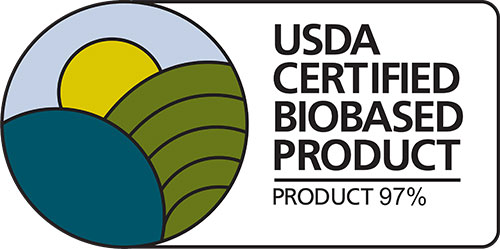Wood fibres
Wood, a sustainable raw material.
From tree to fibre
Viscose fibres consist of cellulose, the most abundant biopolymer in nature. Cellulose is the main component of many plants and is contained in wood with a proportion of about 50 %. More than 100 years ago, a process was developed to extract the cellulose stored in wood and form it into a fine fibre: the viscose process.
To this effect, the cellulose used in the form of pulp is dissolved to form a honey-like, highly viscous liquid, which also gives the viscose process its name. This liquid is spun into a bath by means of a jet, whereby the dissolved cellulose regenerates into a fibre. During this process, the shape, thickness and length of the fibre can be changed and an additive, e. g. a colour pigment, can be embedded.

The following film gives an overview of viscose production in Kelheim and the different applications for viscose fibres:
The wood used for viscose production in Kelheim comes exclusively from certified, sustainably managed forests. Two types of wood are used: Plantation wood, in which the trees are reforested after harvesting, and waste wood from natural forests, which is no longer suitable for other uses, e. g. in the furniture industry. Through the exclusive use of wood with FSCTM or PEFC certification, we ensure that the wood has not been obtained illegally or in violation of protection regulations for humans and nature. The wood pulps we use for the production of viscose are purchased from Lenzing AG and consequently fall under the Wood and Pulp policy of the Lenzing Group.
By joining the CanopyStyle initiative of the not-for-profit organisation Canopy, we have explicitly commited ourselves to protecting ancient and endangered forests by ensuring that our raw material does not come from these forests. This commitment is also reflected in our Wood Pulp Sourcing Policy .
Learn more about the world’s most threatened forest ecosystems with the Canopy Forest Mapper. By preserving these forests, we protect the habitat of numerous animal and plant species and our climate.
We also support the CanopyStyle Next Generation Vision for Viscose the goal of which is to dramatically increase the amount of “next generation feedstock” viscose (made from recycled textiles, agricultural residues or microbial cellulose) in the coming years.
We were awarded a dark green/green shirt in the Canopy HotButton Report 2022.
In recent years, the pollution of nature by microplastics has developed into a serious problem. Plastic is not biologically degradable, but is broken down over the years into the finest microparticles which, invisibly for the naked eye, pollute the air, land, water and living creatures.
Our viscose fibres, in contrast, are biodegradable, i.e. they are completely decomposed by microorganisms under appropriate conditions in the sea and in the soil. Whether in clothing, wipes or tea bags – our viscose fibres enable our customers to manufacture sustainable and environmentally compatible products.
| Viscose | Fibres made of plastic | |
| Raw material | Wood | Mineral oil |
| Degradability | Completely by microorganisms | Only mechanical comminution into microparticles |
| Duration of decomposition | 1 week – 5 months | 20 – 200 years |










